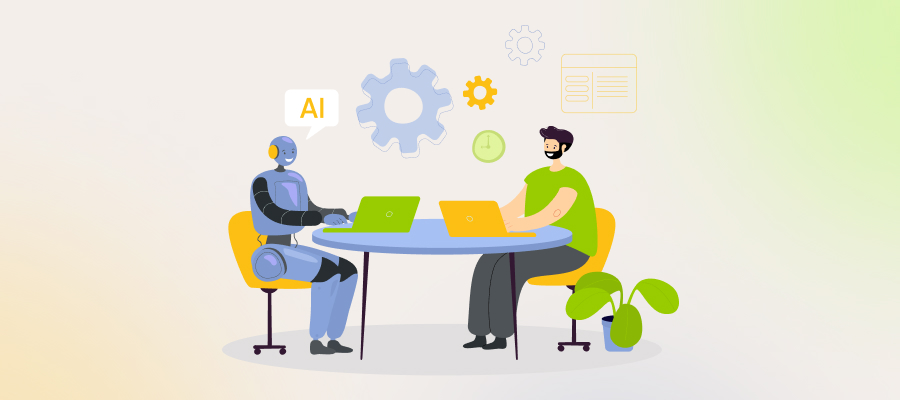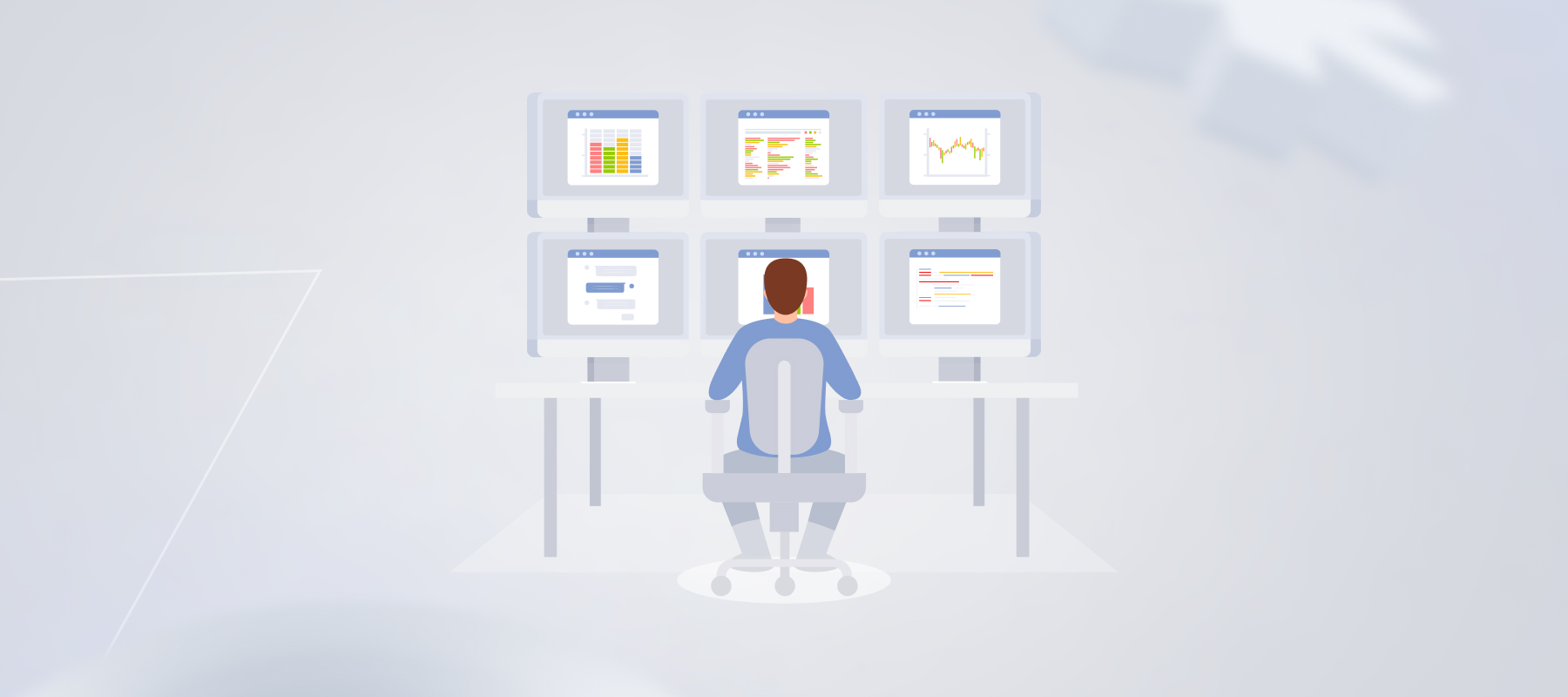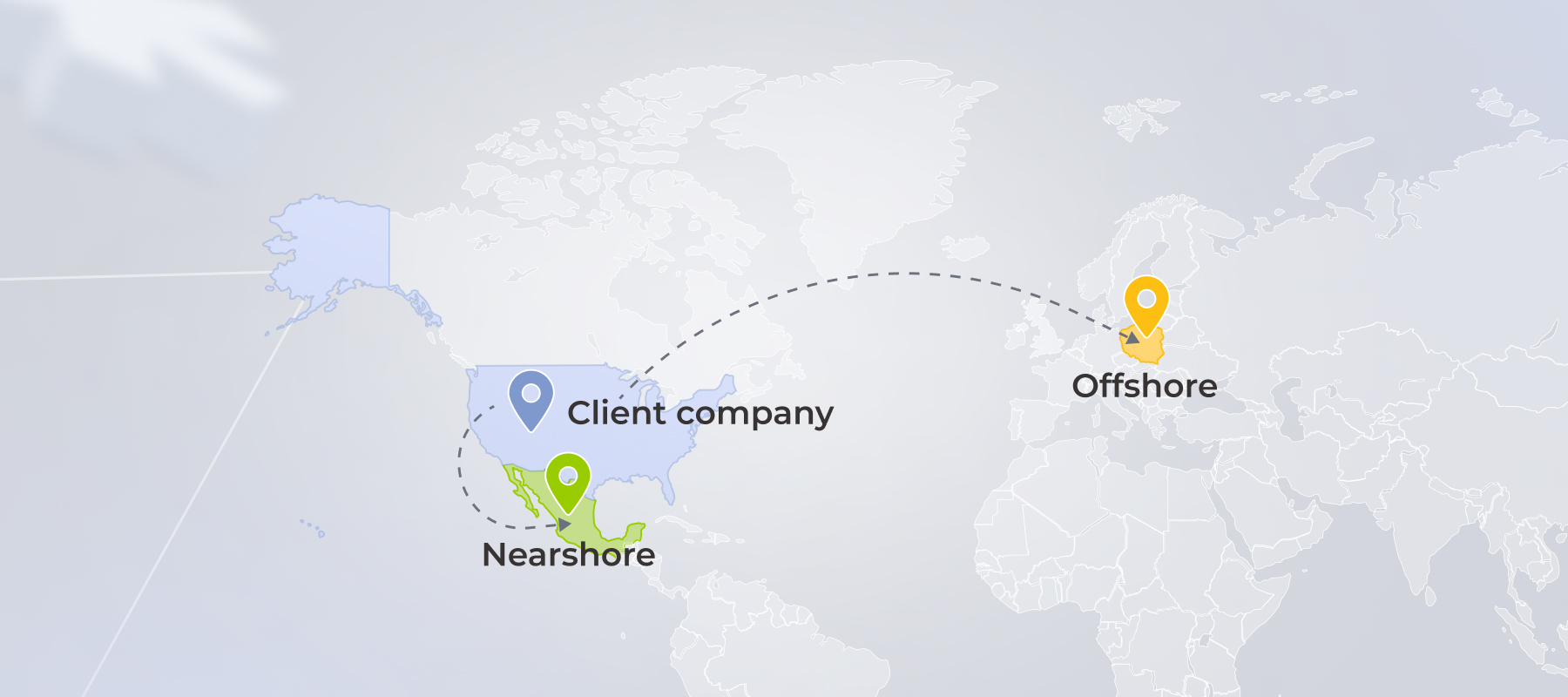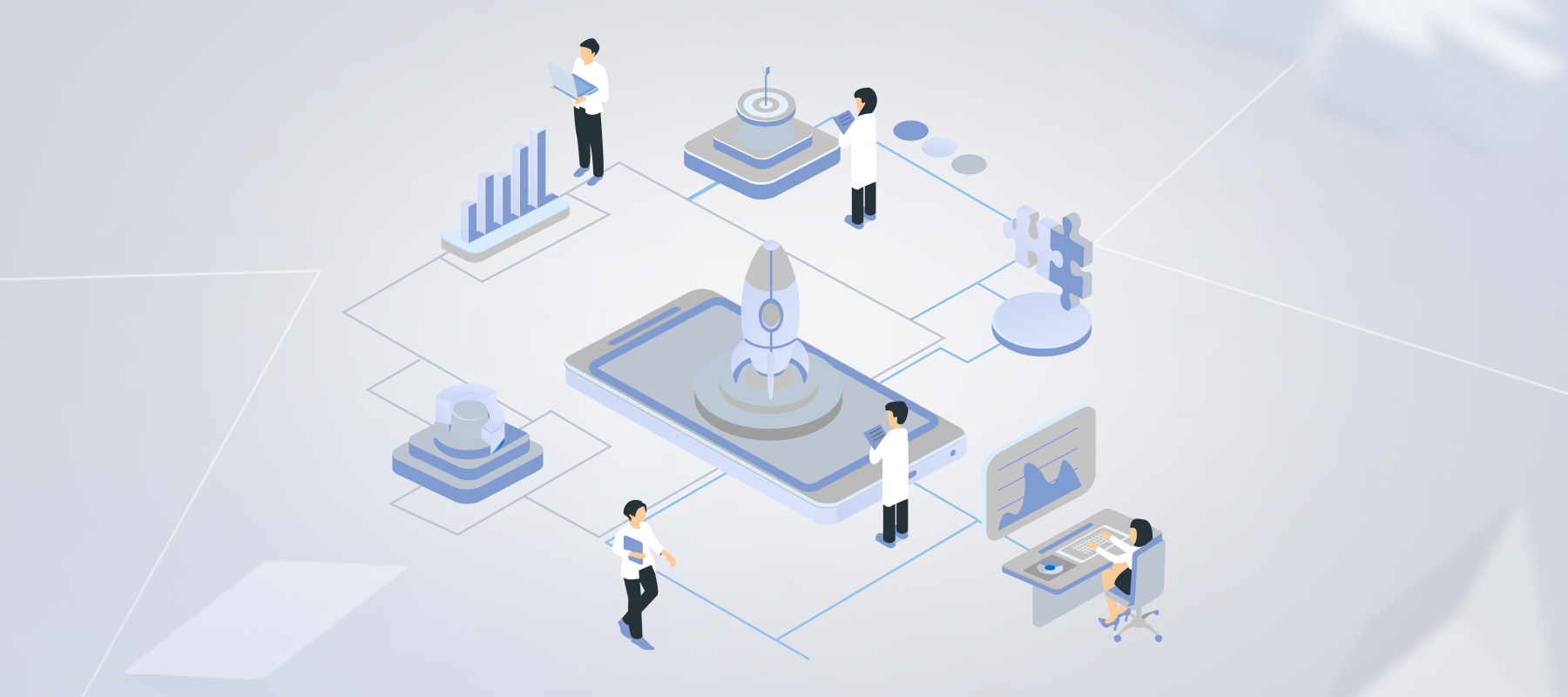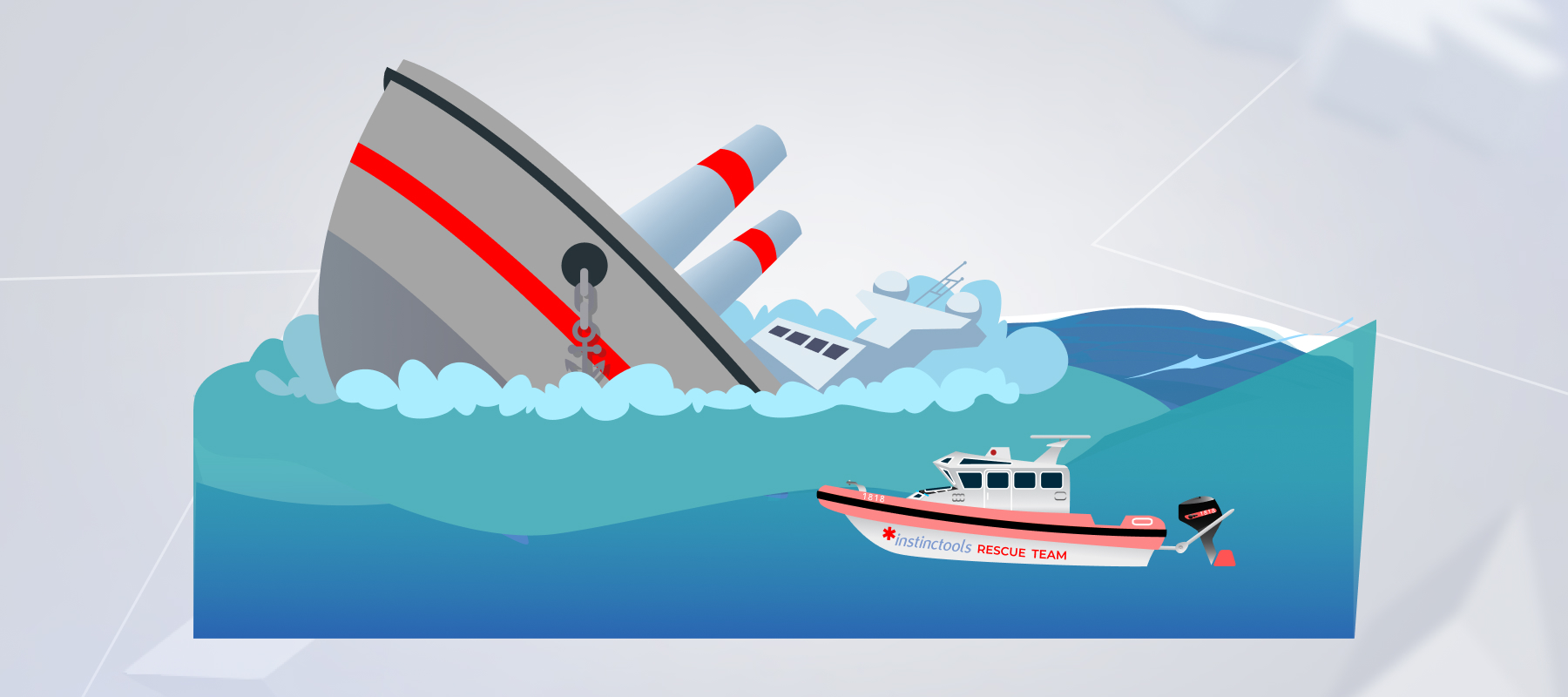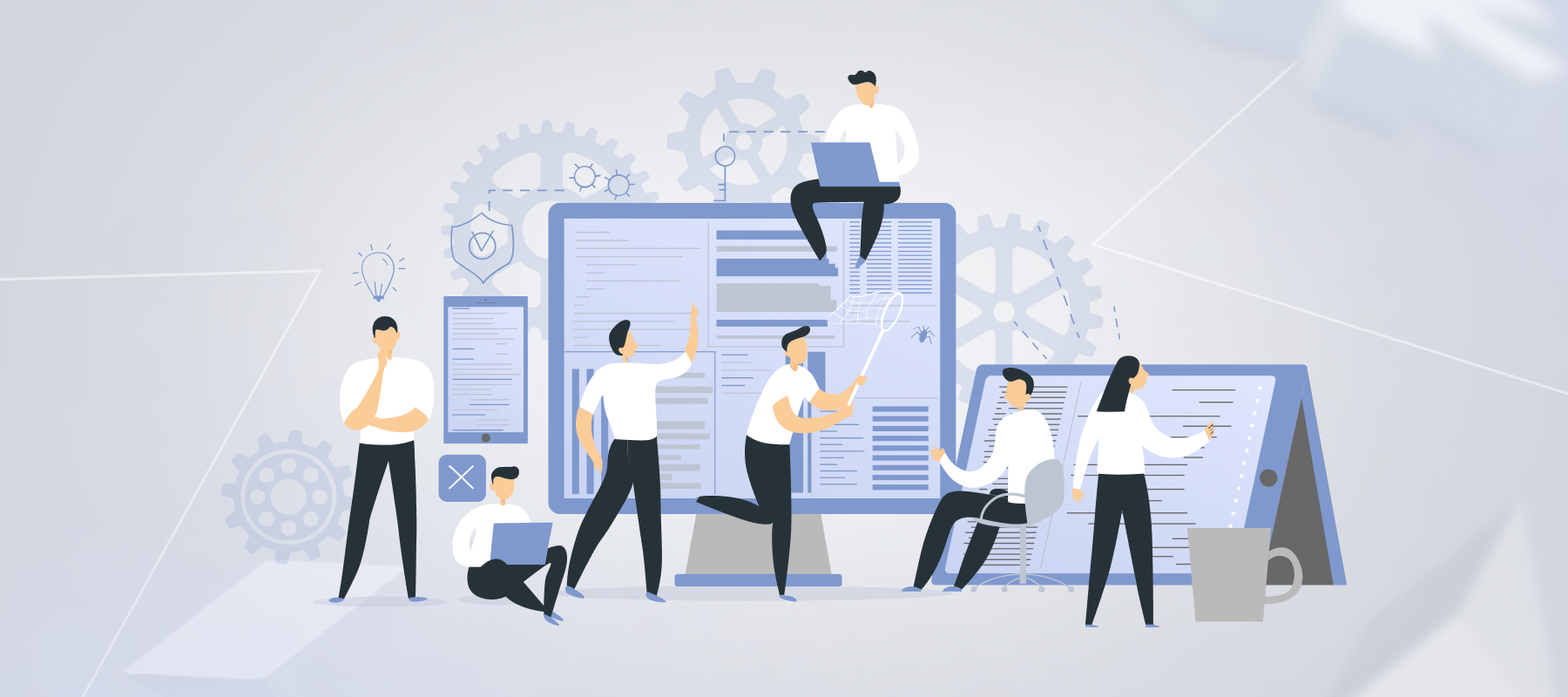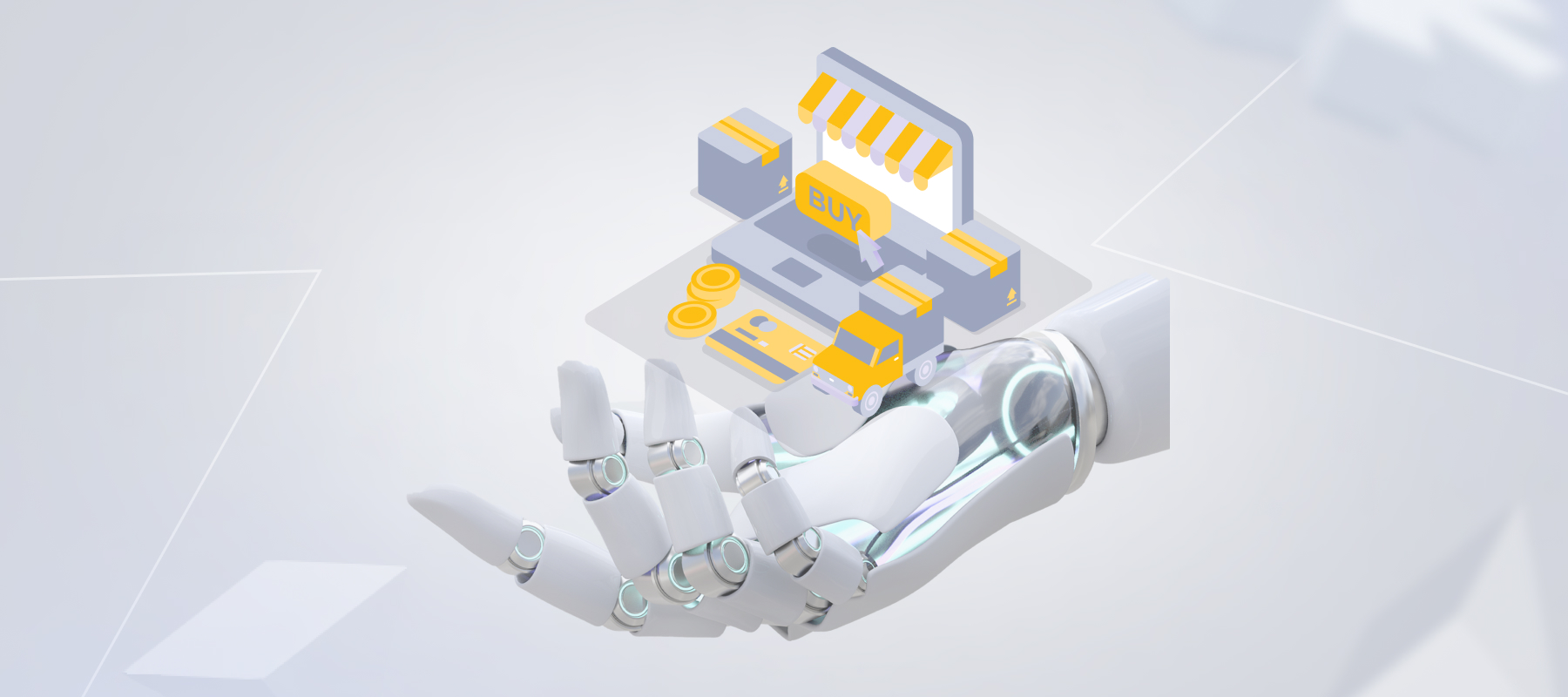Contents
- Untangling IoT market structure: where the value lies
- From sensors to services: unpacking facets of IoT application development
- Headwinds and tailwinds on the journey to IoT app development
- How to create IoT applications: a step-by-step development process
- IoT app development best practices: Aim high. Start small. Expand rapidly
- IoT mobile applications: a necessity or a frill?
- AIoT: a big moment for IoT and AI
- Proven success, real results: *instinctools’ in-the-trenches experience in building IoT applications
- Capture an accelerating IoT value
Over the last few years, IoT application development has emerged as one of the buckets of innovation, underpinning the digital transformation of business. From wearables to smart homes, IoT apps have become a connective tissue between physical and digital — with a growing economic-value potential.
As field experts, we have put together every bit of information you need to know before building an IoT application. Core components of IoT-driven innovation, benefits, and mishaps, the importance of complementary mobile apps — these and much more await you below.
Untangling IoT market structure: where the value lies
According to McKinsey, the IoT industry is poised to generate up to $12.6 trillion in value by 2030. Its potential is concentrated in certain settings, which can be broadly divided into industrial IoT, consumer-facing IoT technology, and public services. Each of these segments possesses distinct characteristics and market opportunities.
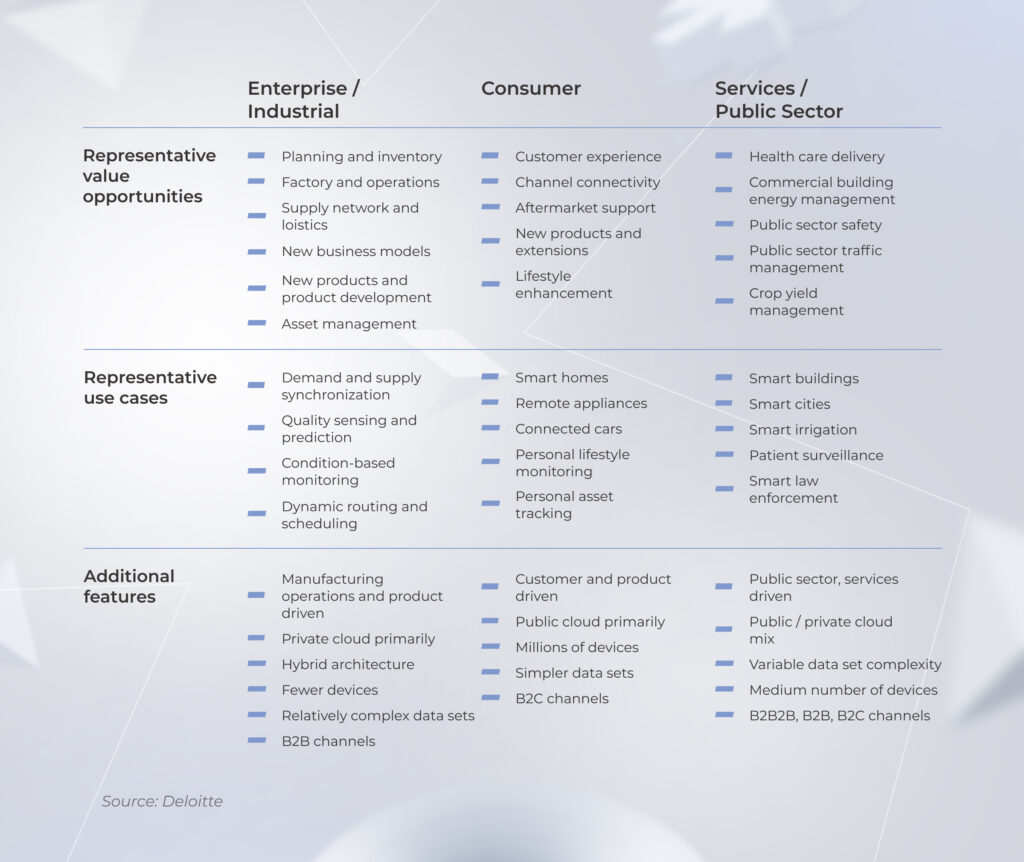
Industrial setting
The industrial or factory environment is projected to scoop up the greatest value from the IoT, around 26% by 2030. Industrial IoT systems are grounded on a relatively private cloud architecture and rely on rich data sets, with smart devices focused mainly on the production environment.
In this category, digital supply network (DSN) applications act as a catalyst of innovation, making the various day-to-day management of assets and people more efficient. Condition-based monitoring, asset tracking, process optimization, and scheduling are the go-to areas transformed by IoT in Industry 4.0.
Consumer IoT
Consumer-focused IoT platforms are designed to support customer experience by operating primarily from within a public cloud environment. By 2030, the market value of the segment is set to hit over $292 billion.
Cut out for the consumer market, these applications include smart wearables, smart homes, wearable technology, asset tracking, and other solutions that revolve around personal and home-connected devices.
Public sector
Adopting IoT for the public sector usually means leveraging connected devices for the greater good, whether it’s public well-being, safety, or resource repletion. In this segment, healthcare IoT exhibits the highest potential with up to $1.8 trillion of economic impact by 2030.
From remote patient monitoring to connected inhalers, the proliferation of IoT solutions in healthcare stretches from individual customers to insurers and governments.
Seize IoT market opportunities
From sensors to services: unpacking facets of IoT application development
You cannot develop IoT applications in a vacuum. The Internet of Things architecture incorporates a combination of hardware and software components that, once connected together, create a smart system full of actionable insights. So let’s see what’s under the hood.
IoT sensors and devices
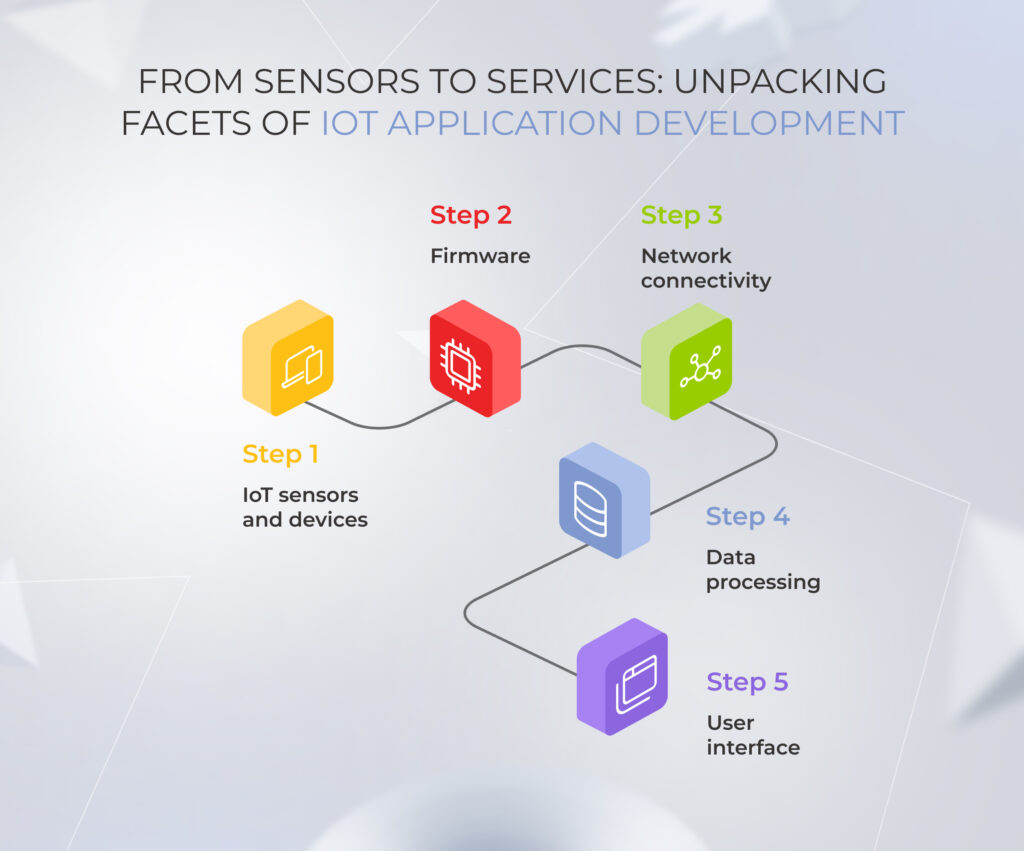
First and foremost, an IoT system includes a device layer with sensors, devices, or actuators used to collect and transfer data. Sensors can record all types of data — from vitals to humidity — and pass it on to the next layer.
Firmware
Firmware is a chunk of code embedded into smart devices that enables them to collect and transmit data as well as empowers device-to-app and device-to-cloud connectivity. Firmware also determines the response of IoT devices to various inputs and conditions.
Network connectivity
After vacuuming up the data, the device then talks to the cloud through some kind of connectivity. The latter includes a variety of communication technologies such as cellular networks, Wi-Fi, LPWANs, RFID, and others. The connectivity can be enabled either directly or via gateways (if there’s a bridge needed between different communication technologies).
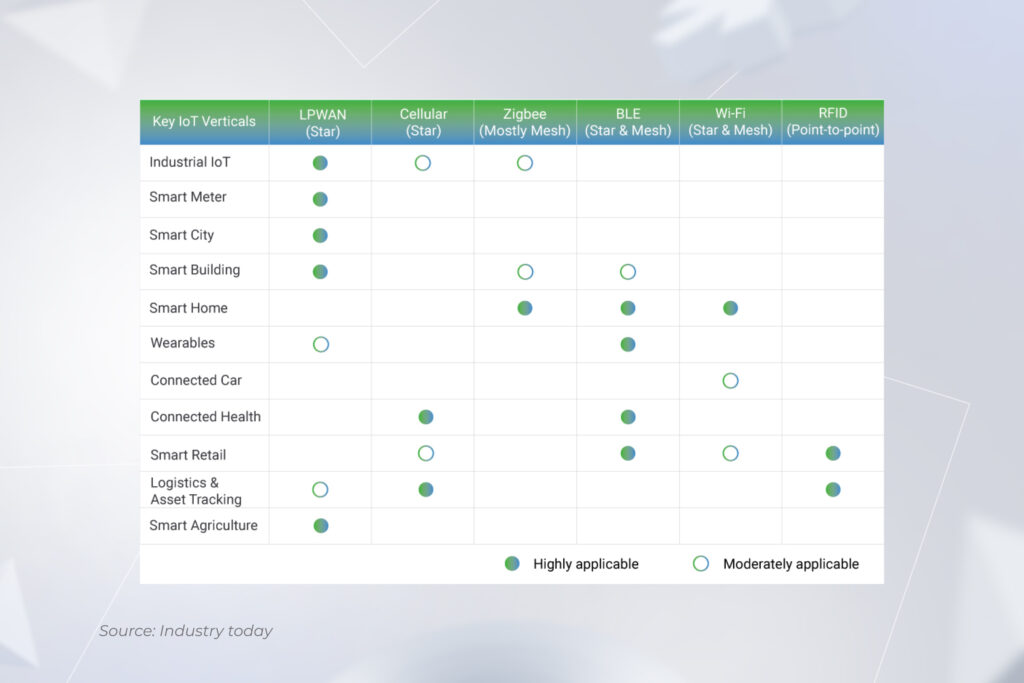
Once parts of the IoT solution are synced, messaging protocols come into the picture. They enable the IoT ecosystem to exchange data with other devices and with the cloud. DDS, AMQP, and MQTT are the most popular protocols used in the IoT ecosystems.
Data processing
When the data gets to the cloud, it needs to be accumulated, stored, and processed. At first, all input ends up in a temporary data storage such as a data lake. If the input is relevant, it’s filtered, enriched, and sent to a permanent location such as a data warehouse where it can be easily accessed for insights.
User interface
Here’s where all the magic happens. The data from a data warehouse is run through smart analytics and presented in an easily digestible form to the user via business intelligence tools. This whole functionality is combined in an IoT app. Depending on the business needs, companies may build web or mobile apps to access data, monitor the variables, and control devices.
Headwinds and tailwinds on the journey to IoT app development
Catching up on the opportunities of Internet of Things app development seems to become a global sport for forward-looking companies. However, with leapfrog potential come significant challenges that, if unattended, can upend your initiative.
Four challenges of building IoT applications
- Most IoT ecosystems are secluded with distinctive interfaces, protocols, and standards, making them incompatible with other connected platforms. Due to the lack of essential interoperability, connected devices cannot operate together, preventing companies from accessing deeper, more contextualized insights.
- The conflict between different IoT ecosystems ushers in added deployment challenges. When deploying at scale, businesses must customize their IoT infrastructure to meet specific requirements.
- Security is another bump on the road to developing IoT applications caused by a large number of connected endpoints. Any vulnerability can end in a system failure or a hacking attack, so every stack layer must have the necessary safeguards in place and be designed with data security in mind.
- Along with the technical barriers, IoT adopters have to navigate an extremely scarce IoT talent market. According to research, over 37 percent of companies have to halt their IoT projects because of deficient in-house skills. An expanding market, growing competition, and evolving buyers’ expectations will only make it harder to bring IoT app developers into the fold.
The driving force behind IoT applications
Against all odds, the number of connected devices is steadily growing from 15.1 billion in 2020 to more than 29 billion IoT devices in 2030. The main reason behind this upward spiral is the real value of IoT applications as perceived by individuals and businesses. The connected ecosystem underpins the greatest tech advancements, enhances customer experiences, and promotes a more effective allocation of resources.
The second reason why more businesses are jumping on the bandwagon is that it’s become more cost-efficient to develop IoT apps at scale. Cloud, machine learning, analytics, and other technologies have now come together for successful IoT adoption in revenue-constrained settings.
The emergence of low-cost, wide-area communications solutions also marked a new chapter in cost-effective IoT adoption. Today, LPWAN enables low-power connectivity between IoT devices, maximizing the capacity, speed, latency, and reliability of connected solutions.
Leverage IoT technology to innovate and differentiate
How to create IoT applications: a step-by-step development process
Considering the challenges mentioned above, how can enterprises successfully develop IoT applications and align them with a given business or business case? The answer lies in a holistic and well-planned software development process.
Ideation
As an initial step, you need to get to the bare bones of your objective, identifying the problem your app will solve. Then, it’s time for a feasibility study to see how your solution idea stacks up against existing products in the market. Legal, regulatory, and security requirements should also be top of mind at this stage to create a detailed project specification.
Discovery phase for hardware and firmware
The type of hardware depends on your project requirements. It can be sensors, GPS tags, active and passive RFID tags, RFID readers, and other kinds of hardware. Once you’ve made your choice, you need to drill down into the overall hardware architecture to see whether you need microcontrollers or microprocessors for data processing.
The technology stack of your firmware varies by the hardware platform. As a preliminary step, your development team needs to determine the firmware’s architecture and structure and elicit requirements.
Design phase: IoT architecture and UI/UX
Once all the groundwork is finished, your IoT developers define the structure of the application, its main components, and their interaction. After that, your dev team charts out the data flow mechanics of the solution and designs data warehouses and data lakes for information processing.
At this stage, you also need to address the IoT integration challenges, if any, and identify communication requirements for IoT devices. The scope of integration may include cloud services, analytics tools, and other business platforms to automate actions and workflows based on IoT events.
There is no one-size-fits-all connectivity solution to go with any IoT product, so laying out the IoT connectivity landscape is important. Besides connectivity, you should also opt for a suitable communication protocol like MQTT, CoAP, HTTP, and others as well as ensure
secure and efficient data transfer from devices to the platform and vice versa.
Develop firmware and software
Your technology partner develops IoT apps in stages, launching a first product version with high-value functionality. Every two to four weeks, new features are added to the solution until it reaches its full-fledged state.
Quality Assurance
At this stage, a team of dedicated QA engineers runs multiple tests on your IoT solution to ensure it is ready for real-life applications. Functional testing, performance testing, and security testing are non-negotiables if you want your application to be reliable and high-performance.
Deployment
When your IoT product is ready to go, developers set up and configure the IoT hardware.
They also configure IoT devices and connect them to your enterprise’s network. After that, the IoT app is deployed into the target environment.
Maintenance and update
Driving value from IoT products isn’t fire-and-forget — you need to keep an eye on the ecosystem long after it’s deployed. This includes scheduled maintenance, troubleshooting, proactive diagnosing, and optimization of cloud resources.
As your business needs evolve, you might need to introduce new functionality or optimize the existing components such as device, network, data, and other facets.
From concept to completion, master every stage of IoT development with our expert guidance
IoT app development best practices: Aim high. Start small. Expand rapidly
According to Microsoft, 30% of IoT projects fail in the Proof of Concept phase. The rest of the projects are put on pause due to their complexity, technical challenges, and lack of talent. Our experts have gathered time-tested practices to prevent your IoT project from going down the hill.
Take care of security
IoT ecosystems are particularly vulnerable to malware and attacks because of the high number of endpoints they have and the lack of the necessary built-in security. To protect your organization, the foundation of your IoT ecosystem should be built around security. This includes device security, connection security, and cloud security.
Preventive measures and active monitoring are also essential to continuously check the health of your at-field devices and react proactively to emerging security alerts.
Get to know the data you already have
IoT application development is all about leveraging data to inform decisions and automate processes. But instead of blindly adopting connected devices, organizations should audit the existing raw data that’s already been sitting in isolation. This will help them get a better handle on their data’s current value and install sensors selectively to cover data gaps.
Pilot your ecosystem
The Internet of Things application development involves allocating large-cost resources and good infrastructure, which sometimes may prove irrelevant against the real use cases. Besides, a lot of IoT components can be validated only with real users.
So it’s only logical to test an idea on a smaller scale before committing to full production. Having a trusted IoT partner on board will help you pilot ideas, analyze findings, and pivot your concepts if necessary.
Embrace IoT at scale
Unlike single-case applications, the Internet of Things is meant to be a far-reaching initiative. By embracing IoT and other complementary technologies at scale, you can realize the real value of the connected ecosystem and trigger fundamental changes in the entire organization, not just the IT function. Therefore, you should design for scale from the get-go and make sure your ecosystem is interoperable from the very start.
Adopt an agile approach
The changing dynamics of IoT make a perfect case for the agile approach. Also, as connected infrastructures are multi-faceted, there will always be a degree of software stitching to connect the dots.
Therefore, it’s faster and more cost-effective to downplay your initiatives at first by building lightweight prototypes via rapid application development models. As your solution takes off, you can then iterate your vision, hone the business case for it, and send it for full development.
Invest in tech talent
Skill shortages remain the top barrier for IoT projects with 47% of adopters complaining about the lack of talent and training. Data management, connectivity, hardware and firmware, IoT app development — all these knowledge areas require hands-on expertise, often unavailable in-house.
Today, companies cast a wider net to address the skills gap by attracting outside talent. Dedicated, third-party vendors help you leverage much-needed IoT expertise, give a head start on solution development, and reduce the costs of local hiring.
Maximize the ROI of your IoT projects
IoT mobile applications: a necessity or a frill?
By 2026, the number of IoT mobile connections is projected to grow twofold — from 2.1 billion in 2021 to 4.3 billion. Acting as a touchpoint between physical devices and digital processing, IoT mobile apps promote a connected environment with automated and remote control of connected devices. But so do web apps, right?
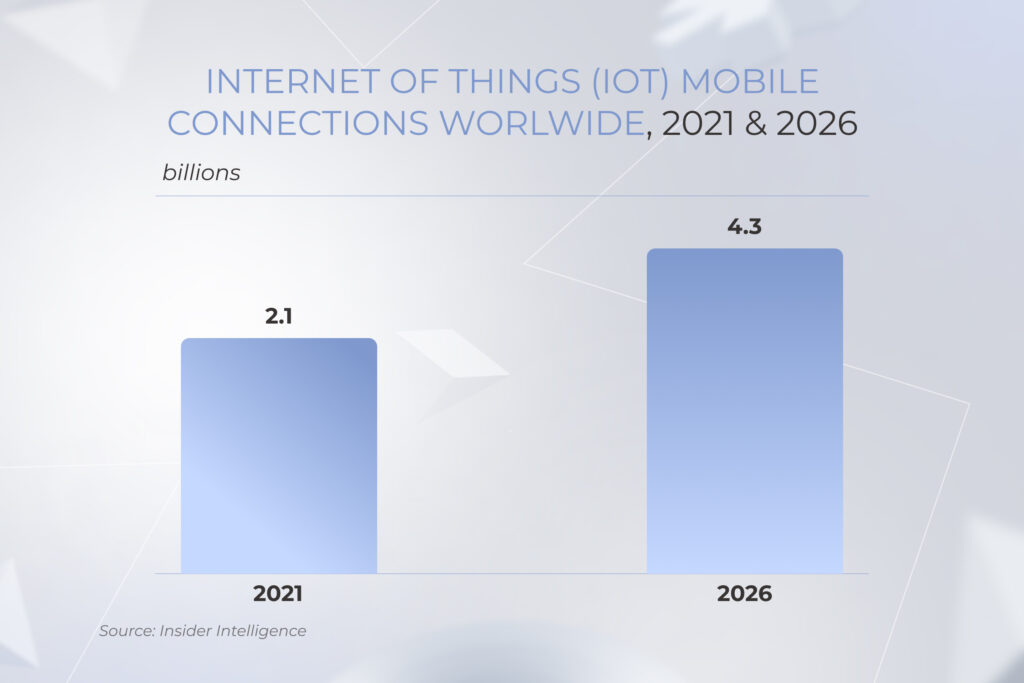
A distinctive capability of IoT mobile apps is their portability. Mobile apps help users monitor the ecosystem on the go, while web and desktop apps are limited to static devices. Therefore, when estimating the necessity for IoT mobile applications, take into account the needs of your end user. For example, Industrial IoT mobile apps can become a great extension to desktop apps at manufacturing companies and enable real-time tracking and monitoring of field asset data.
Also, some use cases are meant exclusively for the mobile such as smart home apps, connected car experiences, fitness IoT, and more.
AIoT: a big moment for IoT and AI
Collating sensor data is not enough to uncover hidden patterns, you need to analyze the data pool to dig up meaningful insights. That’s why the nexus between AI and IoT has become a game-changer, bridging two technologies into a single knowledge hub. By analyzing, processing, and offering recommendations based on IoT data, AI makes the Internet of Things actionable.
The blend of the two technologies has ushered in new use cases that help enterprises solve the most challenging business problems. Examples include predictive maintenance, data analytics for wearables in healthcare, IoT-based quality monitoring, smart energy usage management, and more. Whatever it is, AI and machine learning algorithms act as the brains of the IoT body, unlocking its true potential.
Proven success, real results: *instinctools’ in-the-trenches experience in building IoT applications
At *instinctools, we believe that the Internet of Things is the wave of the future that will pick up even greater momentum in the upcoming years. We offer comprehensive IoT application development services for forward-looking companies who want to develop IoT apps and thus optimize their operations.
In our recent undertaking focused on a plant management solution, we have developed a web application that collects IoT data and visualizes it in a detailed form for end users. The application receives data from the robot plant and BlueIOT® tags and then breaks down critical information on the plants’ health status.
For our other client, *instinctools’ team has built a mobile app for remote unlock of the office. By leveraging iBEACON, the app determines the distance to the door and triggers a remote keyless entry system.
Baby tech is another area redefined by IoT mobile apps. However, it’s crucial to provide high application stability and a convenient app UI — and that’s exactly what we did for one of our clients. We improved the existing app for baby monitoring by updating a communication protocol, revamping the UI, and enabling multiple connections of Parent devices to a Child device.
Want to find out how to bring your project vision to life?
Capture an accelerating IoT value
With cutting-edge tech like predictive analytics, and blockchain, the Internet of Things is coming at us at a much faster pace than we expected. But only a few companies will be able to ride the IoT wave and get enough bang for the buck. At-scale adoption, investment in tech talent and infrastructure, prototyping, and iterative development will put companies on track to smoother adoption and higher ROIs.
Create smarter, connected experiences with IoT


